The Acacia Tree: [Characteristics, Sowing, Care, Irrigation and Substrate]
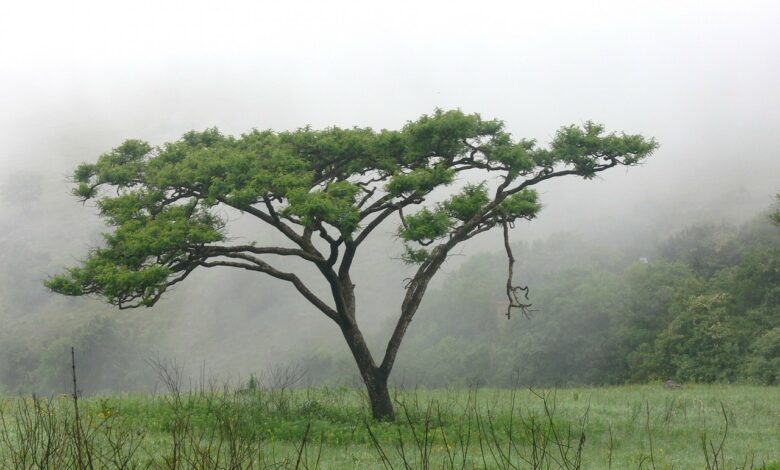
Acacias are graceful trees that grow in hot climates like Hawaii, parts of Africa, Mexico, and the southwestern United States.
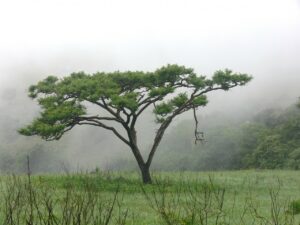
The foliage is usually bright green or bluish-green and the small flowers can be creamy white, pale yellow, or bright yellow.
Acacia can be evergreen or deciduous , depending on the species.
Acacia tree characteristics
| Botanical name: | Acacia. |
| Family: | Fabaceae or Robinia |
| Tree type: | Ornamental . |
| Approximate height: | Between 10 and 20 meters. |
| Sun exposure: | Lots of sunlight. |
| Land type: | It adapts to any type. |
| Pruning: | It does not especially require regular pruning. |
| Source: | Africa and Australasia |
| Toxicity to animals : | Yes, and for humans. |
| Blade type: | Perennial. |
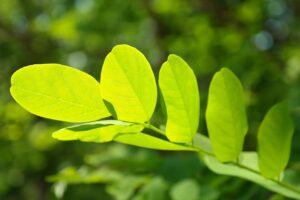
The acacia is a large genus of shrubs and trees in the subfamily Mimosoideae of the pea family Fabaceae.
Originally, it comprised a group of plant species native to Africa and Australasia, but has now been limited to containing only Australasian species.
The name of the genus is Neo-Latin, taken from the Greek ἀκακία (akakia) , a term used by Dioscorides for a preparation extracted from the leaves and pods of the fruits of Vachellia nilotica, the original type of the genus. In 1623, Gaspard Bauhin mentioned the Greek ἀκακία for Dioscorides as the origin of the Latin name.
They can measure, depending on the species in question, between 10 and 20 meters in height.
Acacia wood: useful?
Acacias are interesting simply for their shape and leaves of great ornamental value, but they are also widely used as a food product and for their wood .
Acacia wood is sometimes used for flooring, and the tree’s oils have been used as flavorings in gum, mints, drinks, and frozen desserts.
Acacia gum arabic is used to make glue and medicine.
How do we prepare the land for acacia cultivation?
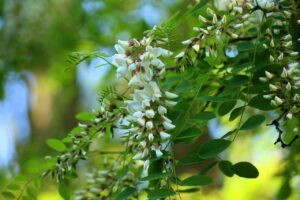
Acacias require well-drained soil, as their roots are delicate and susceptible to excess water.
Like other legumes , acacias establish symbiotic relationships with soil bacteria to fix atmospheric nitrogen, making them suitable for poor quality sites.
That is why they grow well both in cultivated fields and in wasteland.
However, plowing the area before planting the trees will provide optimal rooting conditions and promote healthy development. Whatever their location, acacias will need full sun to thrive.
How do we fertilize these trees and how often?
Acacias respond well to a small amount of nitrogen compost .
However, it should not be added to the soil when the germinated seeds are initially planted in pots or when the acacia is planted outside.
How do we water the acacias?
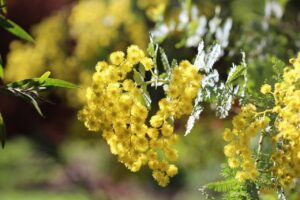
Although acacias are able to withstand dry conditions, prolonged periods of drought will adversely affect the growth of the species, especially when it is a young tree or shrub.
Conversely, overwatering Acacia could have detrimental effects on the growth phases, including root rot.
Acacias do best with infrequent, deep watering every one to two weeks. Once the tree is established, less water is needed, but irrigation of some kind is still important.
Don’t wait for the tree to wilt or show signs of lack of water to water it.
We recommend establishing a drip irrigation system to water our acacias.
Plant an Acacia tree step by step
Step 1: Preparing the acacia seeds
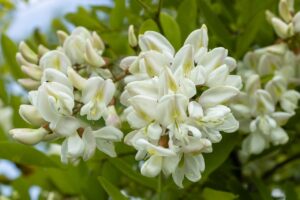
Acacia propagation from seed is fairly straightforward.
Before germinating the seeds, you should nick the hard layer of the seed with a pin or a sharp file and then soak it in almost boiling water overnight.
You can also buy seedlings from a garden store to save yourself some time (if you are planting seedlings, skip to step 3).
In general, germination should begin in February or March, so that the seedlings can be transplanted to the garden in summer .
Step 2: Germination of acacia seeds
Sow the seeds in a tray with a seed mix (buy or mix 3 parts river sand and 1 part peat moss).
Plant them two feet apart and two feet deep.
Place the tray in a warm, humid environment that is partially shaded. Keep the soil moist by spraying it regularly. Germination should take place between several days and a month.
Step 3: transplant the Acacia seedlings

Once the seedlings have reached more than a centimeter in height, transplant each one into its own 5 centimeter pot.
Place several handfuls of stones in the bottom of the container to help drain the water. Acacias prefer well-draining soil and a full day of sunlight, but the seedlings will need to be brought into the sunlight gradually.
Start by placing them near a window so they get a couple of hours of sun a day. Make sure to only water when the first two inches of soil are dry. Acacias prefer a dry environment, and overwatering will be detrimental.
Step 4: transplant acacias to the garden
Acacias are not good container trees, so transplant them into the garden as soon as the temperature is consistently above 65 degrees.
Its root system develops quickly, so if possible, plant the acacia in a position where it has room to grow to its full height.
If the fast-growing roots have started to curl, trim the curls.
Dig a hole twice the size of the pot and fill it with soil to the original level.
Acacia care
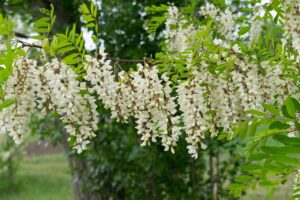
If you live in a dry climate , water once a week until the tree is mature.
Mulch can be applied to help keep the soil moist, but keep mulch away from the trunk and stems as it can cause rot.
A low nitrogen compost can be used , such as a standard bonzai compost.
Prune the tree in the fall , when it has finished flowering.
Different uses that can be extracted from the Acacia sap
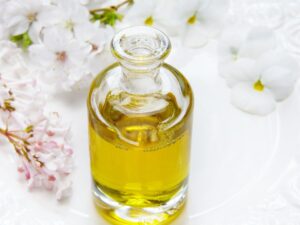
The main part of the acacia that is collected is the sap from the bark, which is known as acacia gum or acacia gum.
This gum is generally harvested from Acacia senegal, as this species is praised for having better properties.
Acacia senegal trees have to be under water stress before producing gum.
That said, it is important to decide in advance the purpose of growing an acacia so that the necessary conditions are in place for collecting the gum or ornamental value.
Acacia flowers are also collected to obtain scented oil that is commonly used in perfumes. Most acacia species are evergreen, but the flowers bloom from November to February.
Pests and diseases that can affect Acacia
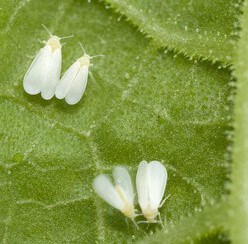 Acacias are mostly low-maintenance trees.
Acacias are mostly low-maintenance trees.
Prune every year to remove dead or damaged wood.
Cut the suckers down to the ground and remove any branches that rub against each other. Regular pruning will minimize branch breakage and serious damage during windstorms.
Diseases that affect Acacia
The most serious disease that affects acacias is anthracnose , which causes spots on the leaves and can end up weakening or even killing the tree.
Quickly pick up the litter and dispose of it.
If anthracnose is a problem, spray the tree according to package directions with a fungicide labeled to treat anthracnose.
Pests and insects
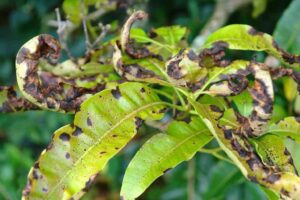 The most common insect pests that bother acacias are aphids , thrips and flies white .
The most common insect pests that bother acacias are aphids , thrips and flies white .
These insects have sucking mouthparts and cause damage by sucking the juices from the stems and leaves. Most of the time, they move on their own. If the damage is severe, spray the tree’s leaves with a steady stream of water to remove them.
You can also spray the acacias with neem oil to suffocate the insects.
Large trees are difficult to treat with horticultural oil. Apply on a cool, cloudy day because the oil can burn the leaves if applied on a hot day.
Disadvantages of acacias
As garden plants, acacias are not without flaws.
These shrubs and trees are known for their short lives, dangerous thorns, attracting ants, and spreading with carefree aggressiveness.
In fact, in some places they are considered invasive species .
Yet as a kind of botanical femme fatale , acacia seduces unsuspecting plant lovers with a truly spectacular display of gorgeous and often highly scented flowers .

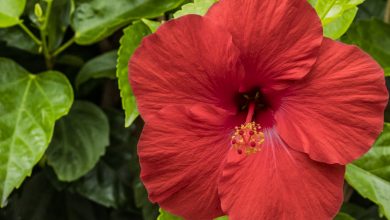
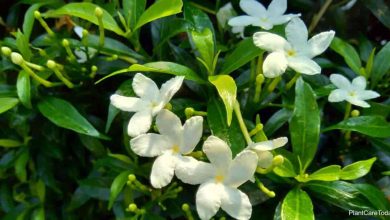
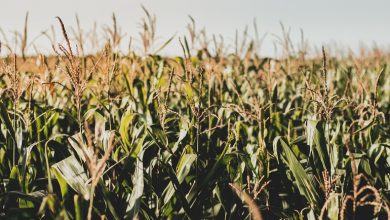
![Photo of Ficus Benjamina: [Planting, Care, Irrigation, Substrate and Characteristics]](https://www.complete-gardening.com/wp-content/uploads/2022/08/ficus-benjamina-planting-care-irrigation-substrate-and-characteristics-390x220.jpg)